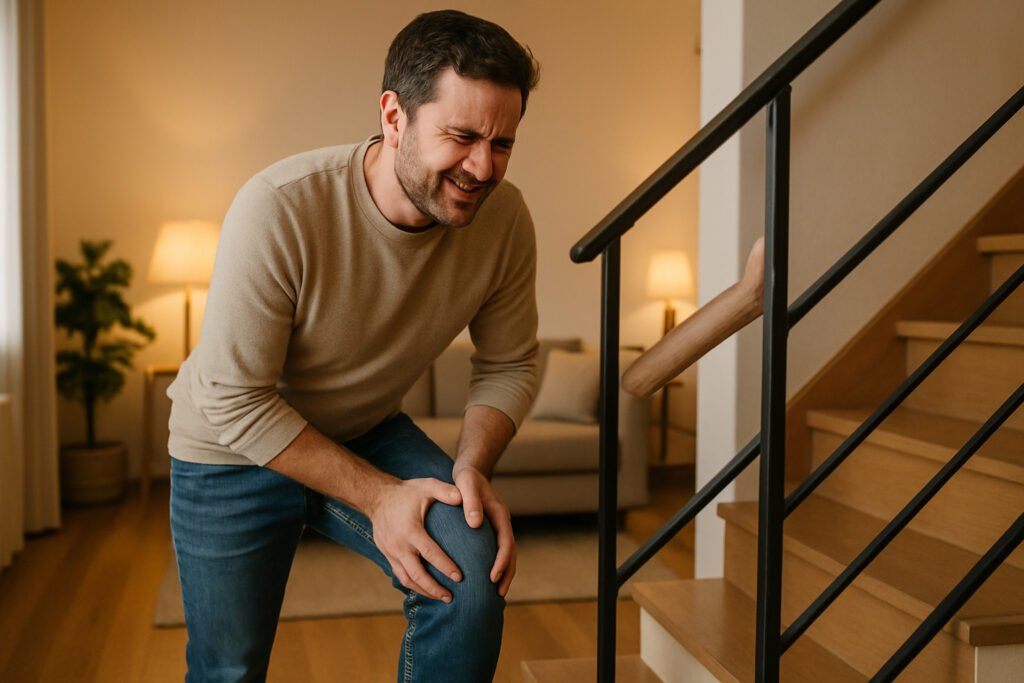Climbing stairs should be a simple, everyday activity. But for many people, it becomes a painful challenge—especially in the knees. If you’ve ever wondered why your knee aches more while going up (or down) stairs than when walking on flat ground, you’re not alone. Let’s break down the real reasons.
1. The Extra Load on Your Knees
When you climb stairs, your knees carry 2–3 times your body weight. That’s because the movement demands more strength and stability than walking on level ground. If your muscles or joints are weak, this added pressure can lead to pain.
2. The Usual Suspects Behind Knee Pain on Stairs
- Patellofemoral Pain Syndrome (Runner’s Knee): Pain around the kneecap caused by misalignment or overuse.
- Osteoarthritis: Wear and tear of the cartilage makes stair climbing especially tough.
- Meniscus Tears: A damaged meniscus (cartilage cushion) can make bending painful.
- Weak Quadriceps: If thigh muscles are weak, your kneecap doesn’t track smoothly, leading to strain.
3. Going Downstairs Hurts More? Here’s Why
Interestingly, many people feel sharper pain while descending stairs. That’s because your knee acts like a shock absorber, controlling your body weight with every step down. The stress on your joint is higher, making existing problems more noticeable.
4. What You Can Do About It
- Strengthen Your Muscles: Focus on quads, hamstrings, and glutes.
- Stretch Regularly: Flexibility reduces strain.
- Check Your Shoes: Proper footwear supports alignment.
- Don’t Ignore Persistent Pain: If it lasts, consult a doctor or physiotherapist for a proper diagnosis.
Final Takeaway
Knee pain when climbing stairs isn’t just “part of getting older.” It’s usually a sign of underlying issues like weak muscles, misalignment, or early joint changes. The good news? With the right exercises, care, and attention, you can often manage (or even prevent) that painful stair-climbing experience.

